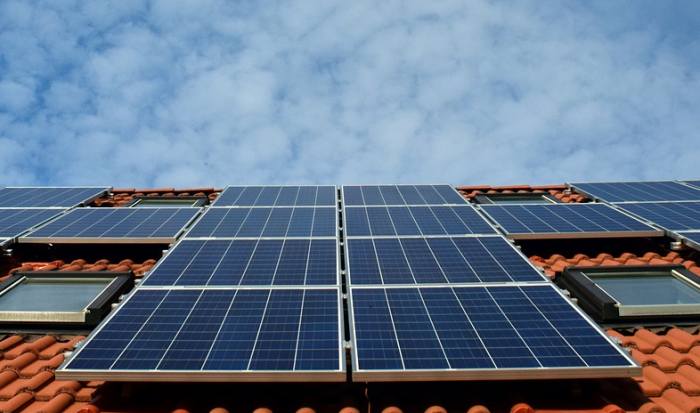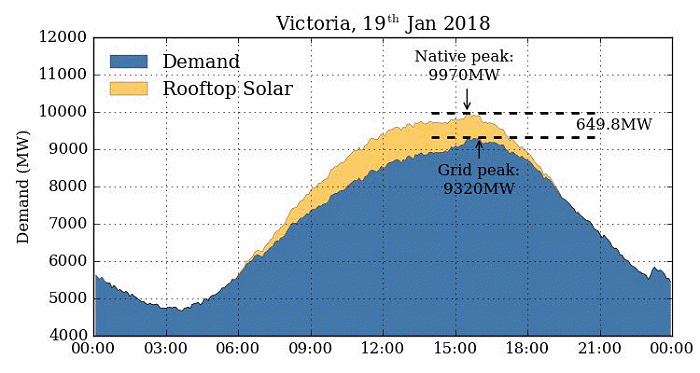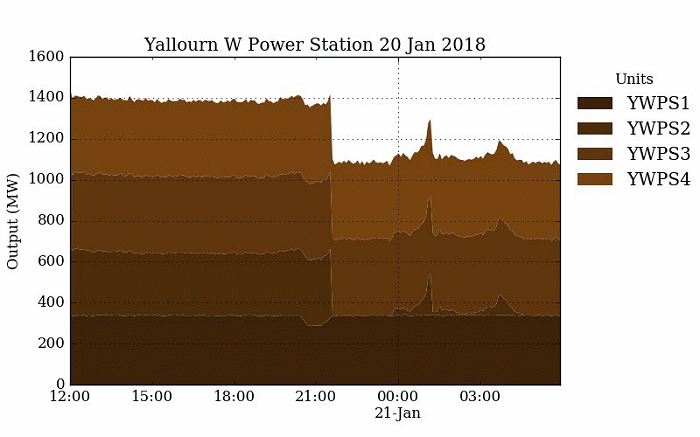
Image: ulleo
The 546,000+ rooftop solar power systems installed in Victoria and South Australia made a valuable contribution towards keeping the lights on and air-conditioners pumping in both states during recent stinking hot days.
According to information supplied by Dylan McConnell from the University of Melbourne’s Climate College, rooftop solar cut peak electricity demand by 650 megawatts in Victoria on Thursday (graph shows previous 24 hours).

Via Yes 2 Renewables
On Friday, SolarCitizens tweeted graphs from Mr. McConnell; showing peak grid demand reduction of hundreds of megawatts on Thursday thanks to small scale solar power (again, dates on the graphs are a little confusing).
While South Australia imported electricity during the heatwave event and NEM Watch was showing “liquid fuels” being used in SA at some points, apparently the state’s shiny new diesel generators are yet to be called into service (except for testing).
Coal Units Cark It
Alinta Energy’s CEO found himself in a difficult situation last week after Loy Yang B’s Unit 1 generator reportedly failed on Thursday afternoon. This was just a few days after Alinta finalised its acquisition of the plant and chief executive Jeff Dimery stated he was confident there wouldn’t be any issues with the power station during the heatwave.
Loy Yang B wasn’t the only brown coal electricity generator to fail in Victoria in recent days. According to The Australia Institute (TAI), Unit 1 at the Yallourn W brown-coal fired power plant again failed on Saturday night and an unsuccessful attempt was made to restart it at 1.15am yesterday morning. It looks like it was still offline at 6am Sunday.
TAI says there have been 25 gas and coal power generator breakdowns so far this summer and Yallourn W has been a repeat offender.
Reposit Power Claims A Victory


 RSS - Posts
RSS - Posts



Frydenberg is nothing short of an embarrasment. It would be good to have an energy minister who understood how the electricity network works!
On a different note – how is the total rooftop solar contribution actually measured over time? I don’t expect all systems are centrally tracked by covert means… is it more likely that this is actually modelled using records of installed capacity etc?
Why do you leave out the important information that coal plants are damaged by the penetration of the intermittents-not because they have intrinsic failings.
AEMC has said that intermittent energy causes damage to both the coal power plants and the grid…and papers from MIT and elsewhere spell it out.
The further the penetration of intermittents into the NEM the more coal plants are damaged -as they’re consigned to standby mode and intermittent use ..due to the mandated favored status the intermittents have in the Merit Order process for dispatch-even though they can’t deliver dispatchable electricity at the price they bid…and often can’t deliver it at all on the date promised.
Tesla’s ‘big battery’ is very much heat -vulnerable …requiring airconditioning….so may have more problems than coal with the Australian summer temperatures….and other data from the last few days show wind can’t possibly save the day….not without massive overbuild and huge transmission costs.
Metro70, what happens if I build a new coal power station?